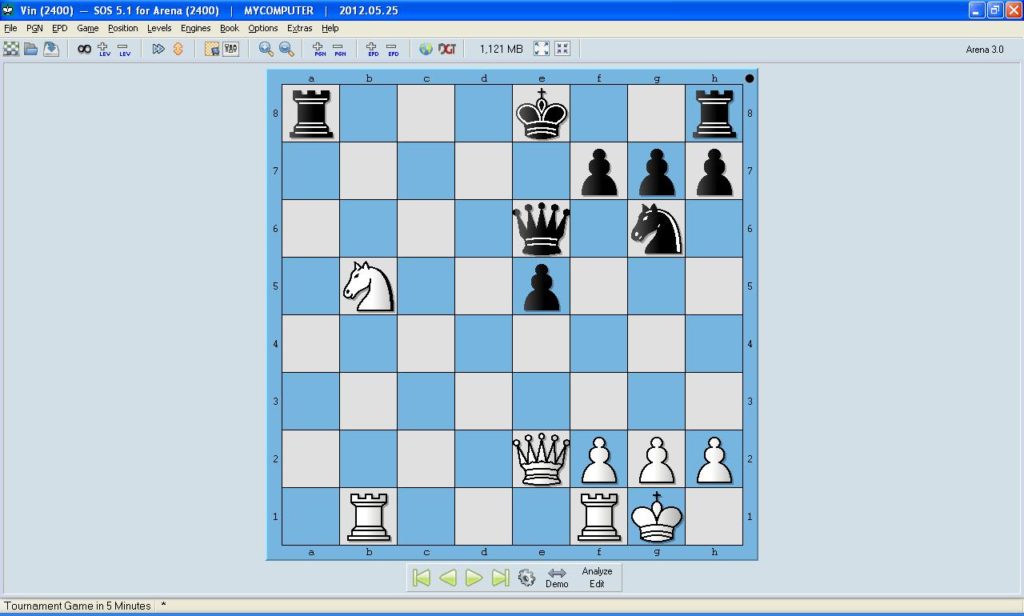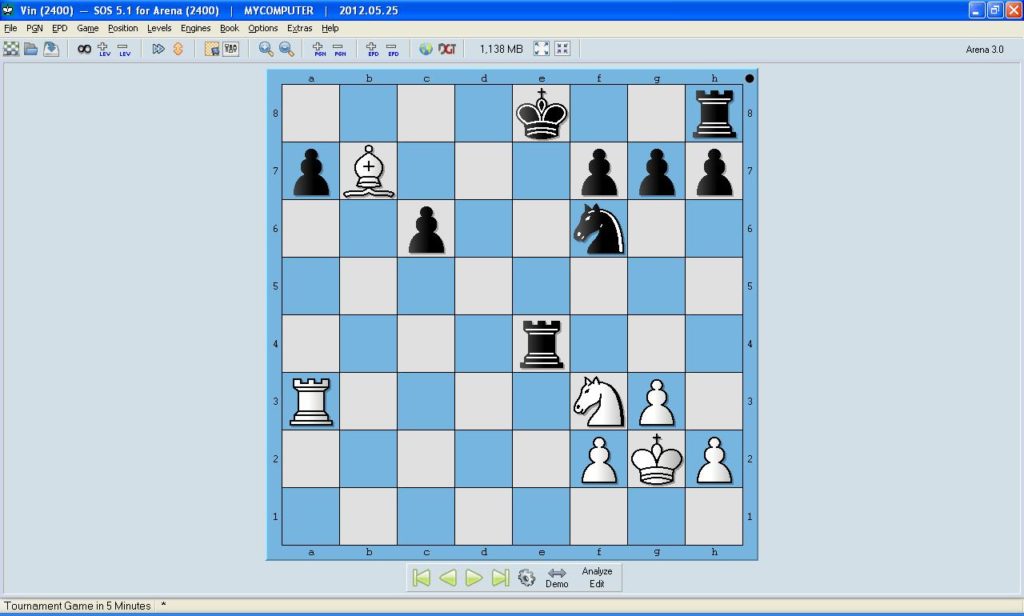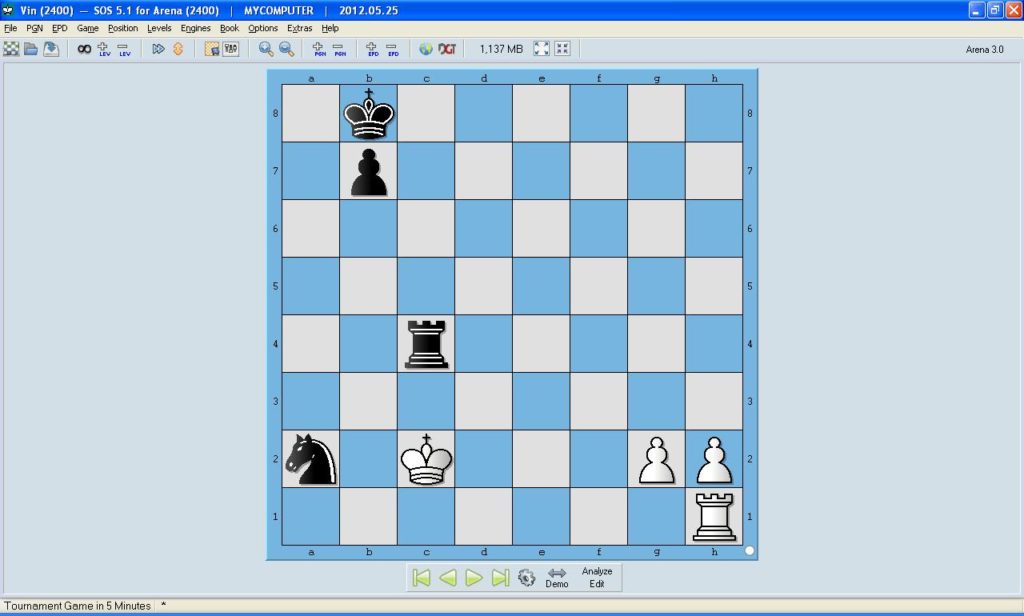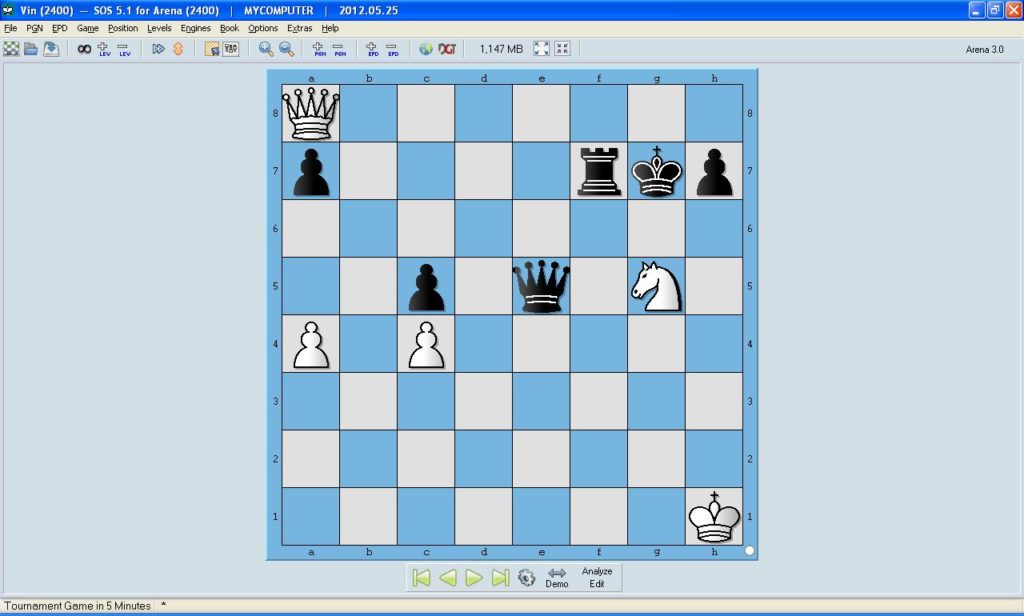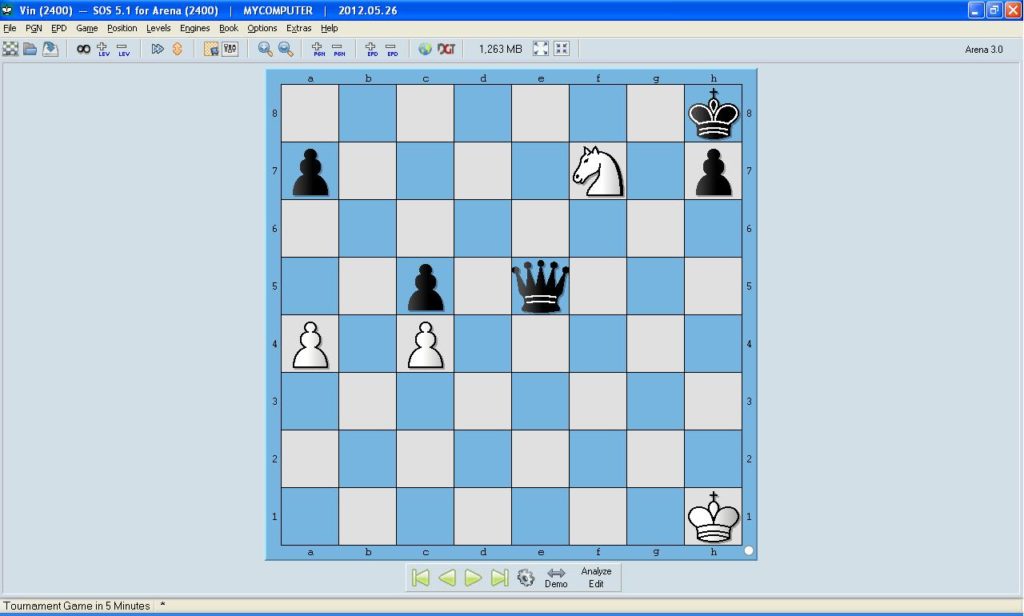In my last post I discussed discovered attacks. Technically, discovered attacks and discovered checks are forms of double attacks. I decided to do two separate postings because this tactic is so common and important. Learning the exact terminology isn’t the goal here, what’s important is recognizing the patterns and being able to incorporate them into your own games.
A double attack is an attack against two pieces or pawns at the same time. It is also possible to attack a piece and a square at the same time. Typically a fork involves one piece attacking two separate enemy pieces. The knight is the piece most associated with forking, but don’t forget that queens, rooks, bishops, kings, and even pawns can fork enemy pieces! Let’s look at some examples.
Here the white knight seems very menacing in blacks territory. Indeed it is because white plays 1. Nc7+ forking blacks king, queen, and rook! Notice that the knight can only attack squares of the same color. Keep that in mind when you are looking for forking opportunies with your knights.
The following is an example of a bishop fork, see if you can spot the fork before looking below the diagram
Here white plays 1. Bc6+ forking blacks queen and rook. Now let’s look at a king fork!
Here white plays 1. Kb3 and forks blacks rook and knight.
Now that we have a basic idea of forks, let’s do an exercise that’s a little harder. Instead of a one move fork let’s try to create an opportunity.
This diagram is a little more difficult, then the previous ones in this post and series. With that said take some time and study it. Imagine that the black king was on h8, if that were the case then Nf7 would be a fork. Is there a way for us to get there?
The winning move is 1. Qh8+! Notice that this move also skewers blacks king and queen. If black plays either Kg6 or Kh6 then white simply plays Qxe5. Because of this 1 … Kxh8 is forced. Then white plays 2. Nxf7+ forking blacks king and queen. The final fork is shown below.
The above is an example of how to turn simple tactics into multi-move combinations. Remember that the foundations for long combinations are basic tactics. Once you learn the basics by heart, then creating forcing sequences becomes much easier. We will continue our tactical study in the next post!

